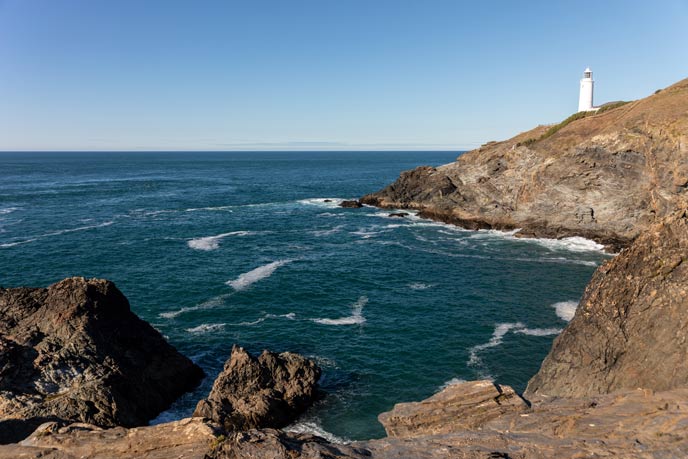Cornwall is a land of myth and legend, a place of mystery, magic, and tall tales. Some of those stories have been handed down over generations and have now become closely associated with the Cornish identity. Many have also left their indelible mark on the region’s landscape and culture.
It can really feel as if every cove, rock, and prehistoric monument has a fantastical tale to tell, and whether you believe in these legends or not they can certainly serve to bring the countryside to life in a whole new fun and exciting way! You will never look at a rock in quite the same way again!
In this article we explore some of Cornwall’s most well-known and best loved legends, uncover a few lesser known ones, and suggest some places you can visit to really experience the magic!
Legend of King Arthur
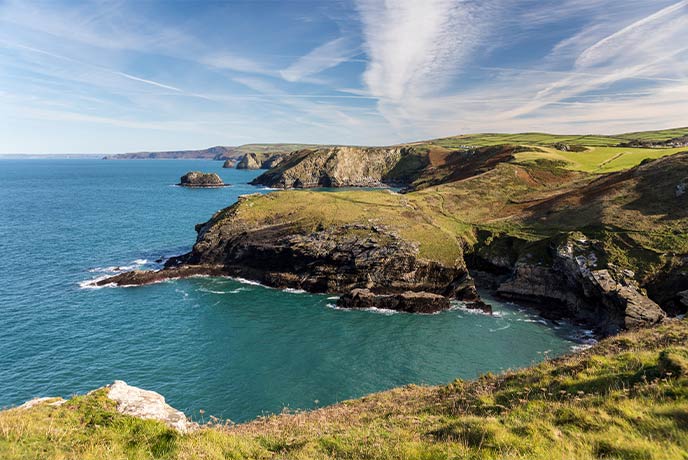
Standing on the cliff top at Tintagel looking across at the ruins of the ancient castle seated on its dramatic, rocky island it’s not hard to let your imagination transport you to a time of wizards and chivalrous knights. The myth of King Arthur has long been associated with Cornwall, with the craze reaching feverish levels after Tennyson visited the area in 1848 and published his Idylls of the King in 1859. Since then, the Arthurian legend has been drawing visitors to the region in search of the knights of the roundtable in the Cornish countryside.
As well as Tintagel Castle, which has been identified as Arthur’s likely birthplace, you can also visit Dozmary Pool on Bodmin Moor, where his famous sword, Excalibur, is said to be hidden. Slaughterbridge, not far from Camelford, is favoured by some early historians as the site of Arthur’s final, fatal battle and you can visit an Arthurian centre there called the Vale of Avalon. Here you can also see a large inscribed stone, known as King Arthur’s Stone, lying in the River Camel. This piece of granite was once said to be the mythical king’s gravestone but it is now thought to honour a 6th century local chieftain.
Beyond these well-known sites, Arthur’s name and his story permeates the landscape. He is thought to have had his court at Bury Castle, an Iron Age hillfort, near Cardinham Woods and on Bodmin Moor you can find a prehistoric monument known as King Arthur’s Hall as well as a rock formation called King Arthur’s Bed.
Marvellous mermaids
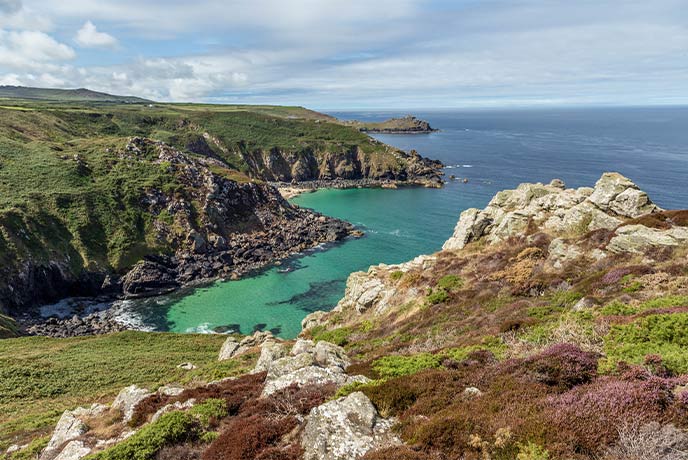
Cornwall is almost entirely surrounded by water so it’s hardly surprising that many of our most-loved legends have a connection to the sea. There are numerous tales of mermaids, those half-human, half-fish creatures that were once believed to cause all kinds of mischief on the coasts. There are legends of mermaids in Padstow, Lamorna Cove, Seaton, Cury and Perranzabuloe to name just a few.
These wonderful, watery beings are frequently the focus of local artworks including the colourful medieval wall paintings in Breage church, a carved bench end in Camborne Church and, perhaps most famously of all, the beautiful Mermaid’s Chair in St Senara’s Church in Zennor. The Mermaid of Zennor has become one of Cornwall’s best known folklore tales.
The carving on the wooden chair, which was once part of a pew, is said to be a portrait of a mermaid who visited the little church in human form. The strange woman captivated the men of the congregation with her beauty and her melodious voice, eventually luring away the churchwarden’s son, Matthew Trewhella, to her watery home beneath the waves.
There is another infamous mermaid associated with the north coast town of Padstow. Here the sandbar known as the Doom Bar stretches across the mouth of the harbour and has an ominous name and an equally ominous reputation. This blight on shipping is said to have been formed by a mermaid.
There are a few versions of the story but in short, legend has it that a young fisherman called Tristram Bird was out on a boat taking pot shots at what he thought was a seal with a new gun. Unfortunately, what he actually hit was a mermaid, who, with her dying breath, cursed the little port of Padstow and furiously threw up great handfuls of sand from the seabed to form the constantly moving bar that we still see today.
Gargantuan giants

Legends of giants are everywhere in Cornwall. So many of our hilltops, rock formations, and prehistoric monuments have stories of giants associated with them. It was once common for what was seen as unexplainable, such as how the Cheesewring was formed or who built Lanyon or Trethevy Quoit, to be interpreted as the work of some titan from the past. Who else but a giant could have balanced those rocks on top of each other?
Many of these Cornish giants have been given names, personalities, and legends of their own, which are remembered and repeated in the places connected to them. Some, like the giant Bolster from St Agnes, even have their own annual festival!
There was Cormoran, who lived on St Michael’s Mount and terrorised the area, stealing local people’s livestock to eat and who was slain by Jack the Giant Killer. Legend has it that the giant’s heart can still be seen on the path up to the castle. Trecobben, who made his home on Trencrom Hill, used to throw stones at Cormoran on the Mount from there (one of these stones was known as the Giant’s Bowling Ball and can be seen at the base of the hill today). Not all the giants were grumpy however. There was also Holiburn, the friendly giant, who spent his life protecting the people of Morvah in Penwith.
On Carn Brea hill near Redruth there are rock formations known as the Giant’s Coffin, the Giant’s Head, the Giant’s Wheel and the Giant’s Cradle. According to folklore, all of these once belonged to a giant known as John of Gaunt, who was one of the last of his kind in Cornwall. Back on the north coast, the famous Bedruthan Steps get their name from the giant who used to leap from stack to stack, using them as towering stepping stones as he toured the Cornish coastline.
Mythical creatures
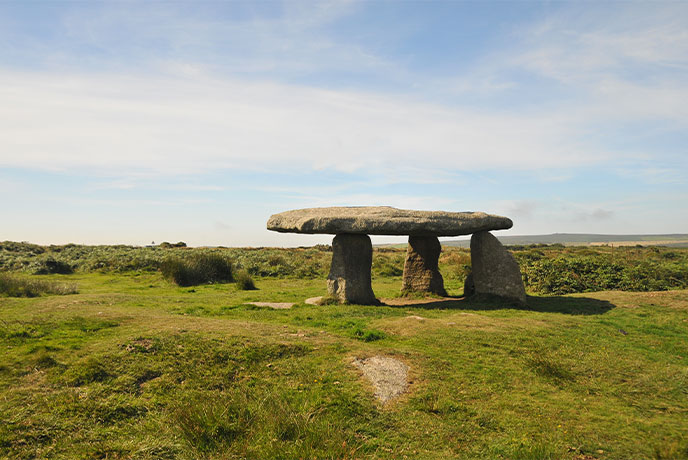
If the folklore of the past is anything to go by then Cornwall must be pretty much crawling with fascinating creatures. At one time it was thought that they could be found in every home, in every meadow, and down every mine. Whether you call them fairies, piskies, spriggans, brownies or knockers, these mythical folk seem to pop up just about everywhere!
Once thought to be the spirits of the moors, rivers, trees or caves, they were very much seen as mischief makers who took delight in confusing lost travellers, upsetting housewives in their daily tasks, and bothering farmers and their animals. There were those that believed that piskies would steal away your children and replace them with a changeling or ride horses around at night until they were exhausted. And many thought that spriggans could conjure up storms to destroy homes and crops, while also guarding buried treasure. Spriggans it was said could be found around the cairns, quoits and ancient barrows of Cornwall where the ancient ancestors had hidden their wealth.
Cornish people will still often refer to being ‘piskey-led’ when they find they have lost their way or become disorientated while out walking – though these days this seems to happen most frequently on the way home from the pub. It was believed that the best way to avoid being piskey-led was to wear an item of clothing inside out – apparently there was an old man named Glasson who believed he was piskey-led on a bright moonlit night while walking between Ludgvan and Gulval. No matter which path he took, he always ended up back where he had started. At last he turned his coat inside out and reached his home without any further problems.
Knockers are a particular kind of mythical folk who are said to live underground and, when tin mining was the main industry in Cornwall, took to living in mines. Cornish miners were very superstitious and often went to great lengths to appease the knockers, famously leaving them the crusts from their pasties. The name Knockers refers to the unsettling sounds that can often be heard underground and miners would put the echoes, creaks, and groans down to tiny figures hiding in the shadows. These underground folk were not always considered malevolent, it was believed that Knockers would warn miners of an impending rock fall or disaster, giving them time to escape.
Cornish sea monsters
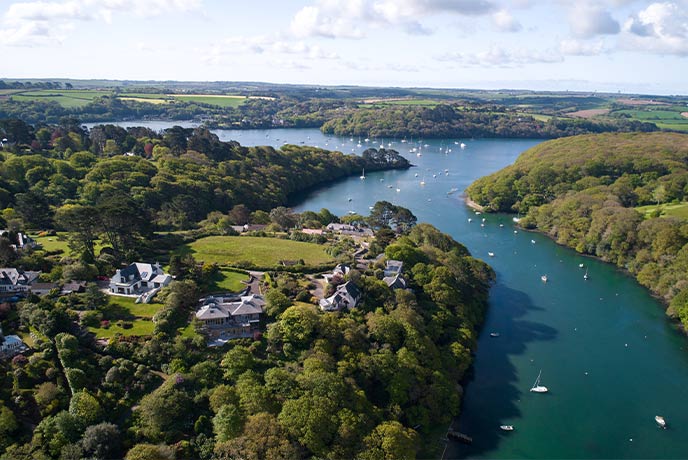
Legends of sea monsters are found all over the world and, like mermaids, most cultures have their own versions of unexplained creatures from the deep. We are all familiar with the strange serpents that were often depicted on the edges of old maps, and with its long and important sea-faring and fishing heritage, it is hardly surprising that sea monsters are very much a part of Cornwall’s history too.
Over the years there have been reports of strange sightings all around the Cornish coast – newspapers in 1876 reported that fishermen had caught an unusual serpent off Portscatho, then in the 1920s two Flushing fishermen reported landing a 20m long sea monster with a beak, long neck, fur and flippers. A leviathan was spotted off Longships Lighthouse in 1903 and another off Lands End in 1906, and the so called North Coast Nessie was seen off Port Isaac and Newquay in the 1930s.
However there are a few hot spots where unexplainable things seem to have been regularly spotted in the water. One of those places is Falmouth Bay and the Helford River. A sea monster, now known as Morgawr, is believed to inhabit the area and has been repeatedly seen by both fishermen on the water and walkers on the coast. There was a flurry of sightings of the long-necked, stubby horned creature during the 1970s and 80s, which led to something of a media frenzy. So why not take a boat trip out on the water in Falmouth Bay and see if Morgawr makes an appearance.
Beast of Bodmin
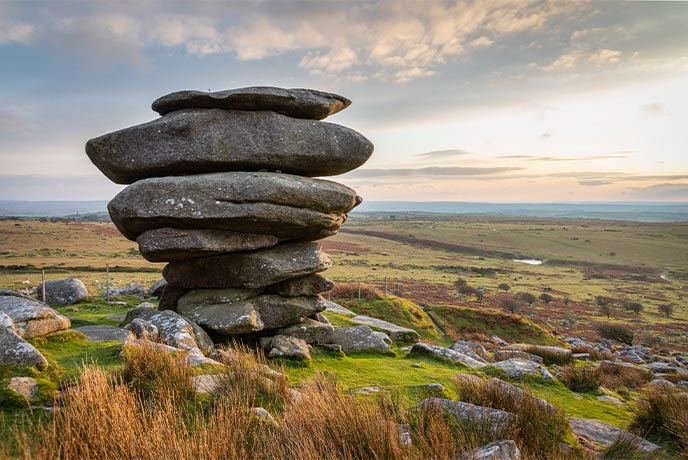
No matter how far-fetched this story might seem, it has to be Cornwall’s most enduring mystery of recent years. Reports of a large cat on Bodmin Moor initially began to emerge in the 1970s and since that time there have been more than 60 individual sightings, with a spate of incidents occurring during the 1990s.
Witnesses often described seeing a large black, panther-like creature out on the wilds of the isolated moorland but perhaps most worryingly farmers have frequently reported attacks on livestock that they were sure could not be attributed to the usual predators of the region. Alongside these sightings, large cat-like paw-prints have also been spotted and strange growling and hissing noises reportedly heard by walkers.
Bodmin Moor with its towering granite tors, prehistoric monuments, and boggy marshes is a particularly atmospheric area of Cornwall, especially when the mist rolls in across the sprawling moorland. It is certainly a place where the imagination could run away with you but so many sightings of a big cat over so many years is hard to explain. Consequently, the government decided to act and in 1995 there was an official investigation into the Beast of Bodmin. The inquiry concluded that there was no evidence that a big cat of any kind was living wild on the moor but the sightings continued and many locals are adamant to this day that the Beast is out there!
There are a few theories as to what the Beast of Bodmin could be. Some believe that the creature is an exotic pet that has escaped from a zoo or a private collection and has gone unreported because it was being kept illegally. Others think that the creature could be something much spookier – that the Beast is some kind of paranormal apparition.
If these myths and legends have captured your imagination and you want to discover more, then why not use one of our cosy holiday cottages as your base and start your own adventure in Cornwall!




